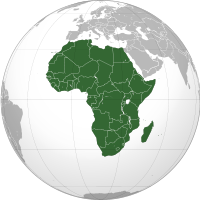Al-Qaeda Grows In Africa: New Union With Al Shabaab – Analysis
By RSIS
Al Shabaab presents a growing threat to Somalia. After it formalised its association with al-Qaeda, the momentum of attacks, especially suicide attacks, increased. By making inroads to Africa, al Qaeda will exploit Al Shabaab’s long standing links with like-minded threat groups in a fragile continent.
By Rohan Gunaratna
SOMALIA’s Harakat al-Shabaab al-Mujahedeen joined al-Qaeda in February 2012. News of the new union prompted celebrations in southern and central Somalia, areas long controlled by al-Shabaab. Unless al-Shabaab is dismantled, the group will pose a threat not only to Somalia but the entire region and beyond.
Since the announcement, the frequency of attacks against Somali government and foreign peacekeepers has dramatically increased. Somali Islamists regard al-Qaeda as the vanguard of Islamist movements worldwide. They also attribute the withdrawal of US forces from Iraq and their pending departure from Afghanistan to al-Qaeda’s competence. Thus, al-Shabaab hopes this new alliance will help rid Somalia of foreign influence, including foreign forces, and pave the way for the eventual establishment of Islamic law.
Rise of a Union

Al-Qaeda’s union with al-Shabaab threatens both the Horn of Africa — Somalia, Ethiopia, Sudan, Eritrea and Djibouti — and East Africa, which includes Kenya, Uganda and Tanzania. Although al-Qaeda has suffered massive degradation since Osama bin Laden’s death, its footprint is expanding in Africa. It has already established an ideological and operational presence in three areas on the continent — the Maghreb, the Sahel and West Africa. A large Muslim population, an especially large youth population and porous borders make Africa ripe for ideological extremism and terrorism. Without significant international investment to fight poverty, corruption and poor governance, the influence of al-Qaeda and its associated groups will spread to other parts of Africa in the coming decade.
The Union of Islamic Courts (UIC), a coalition of Islamist groups in Somalia, occupied much of southern and central Somalia by mid-2006. When the UIC broke up later that year, its military wing — the hardline al-Shabaab — eclipsed its political wing. After imposing strict sharia law in Somalia, al-Shabaab’s religious police enforced a Taliban-style regime: whipping women wearing Western attire, stoning to death accused adulterers, carrying out amputations for robbery, punishing through floggings and beheadings.
But al-Shabaab’s hold on the country has weakened over the past five years. As a result, its leadership has gravitated closer to al-Qaeda. Last month’s unity declaration is best understood as the culmination of this process. Al-Shabaab leader Sheikh Mohamed Mukhtar Abdirahman, or “Abu Zubeyr”, pledged allegiance to al-Qaeda leader Dr. Ayman al-Zawahiri in a video released by al-Qaeda’s media arm. Posted on jihadist forums, the video featured an audio speech from Zubeyr and footage of an address by Zawahiri.
Zubeyr informed Zawahiri that al-Shabaab enjoys success and “great fortune” in its jihad in Somalia and congratulated Zawahiri on the “defeat” of U.S.- led forces in Afghanistan and Iraq.
A History of Cooperation
Relations between al-Qaeda and Somali Islamists date back to the early 1990s, when al-Qaeda made inroads into Somalia following the collapse of the Somali state after a terrible civil war and famine. Al-Qaeda set up a base of operations similar to that in Afghanistan, establishing training camps and conducting a few attacks to spark the imagination of Somali Islamists. Members of al-Shabaab were instructed on terrorist tactics — suicide attacks, roadside bombs, assassinations, poisons — and on developing platforms and disseminating propaganda to radicalise and recruit other Somalis. This cost-effective strategy allowed al-Qaeda to impart its methodology of “martyrdom operations” and its ideology of global jihad to al-Shabaab, effectively sowing the seeds for collaboration between the two groups.
But despite its training operations and involvement in a number of attacks, al-Qaeda failed to gain significant traction in Somalia. In general, Somali leaders did not like al-Qaeda’s strategy of perpetual war. Tribal loyalty and fighting between the factions created an unstable environment for al-Qaeda to establish a permanent base of operations. But all this changed with the Ethiopian intervention in 2006.
What Next?
Given the severe challenges confronting al-Qaeda in Pakistan and Afghanistan as well as in the Levant, the Arabian Peninsula and the Maghreb, news of the union between al-Shabaab and al-Qaeda was celebrated by the global jihadi community. The union is not a superficial one; it is the formalisation of a relationship of cooperation and collaboration spanning two decades. Al-Shabaab will benefit greatly from al-Qaeda’s support, both in terms of finances and of recruits.
As the vanguard of the Muslim militant groups, al-Qaeda leaders have called upon their supporters and sympathisers to support al-Shabaab against the Somali military and the African Union peacekeepers. Al-Qaeda, weakened on many fronts, will benefit from making Somalia a key hub for operations in Africa. The union with al-Shabaab provides al-Qaeda the opportunity to expand into a promising new frontier.
The international community should contain the threat from Somalia by supporting the Transitional Federal Government of Somalia and peacekeeping forces. As part of the African Union Mission in Somalia, soldiers from Djibouti, Uganda, Burundi and Kenya will replace Ethiopian forces planning to pull out of Somalia shortly. If these forces fail to confront the new al-Shabaab-al-Qaeda alliance, the consequences for Somalia, Africa and the global fight against terrorism will be dire.
Rohan Gunaratna is head of the International Centre for Political Violence and Terrorism Research (ICPVTR), S.Rajaratnam School of International Studies (RSIS), Nanyang Technological University. This is an abridged version of an article that first appeared in The National Interest.
